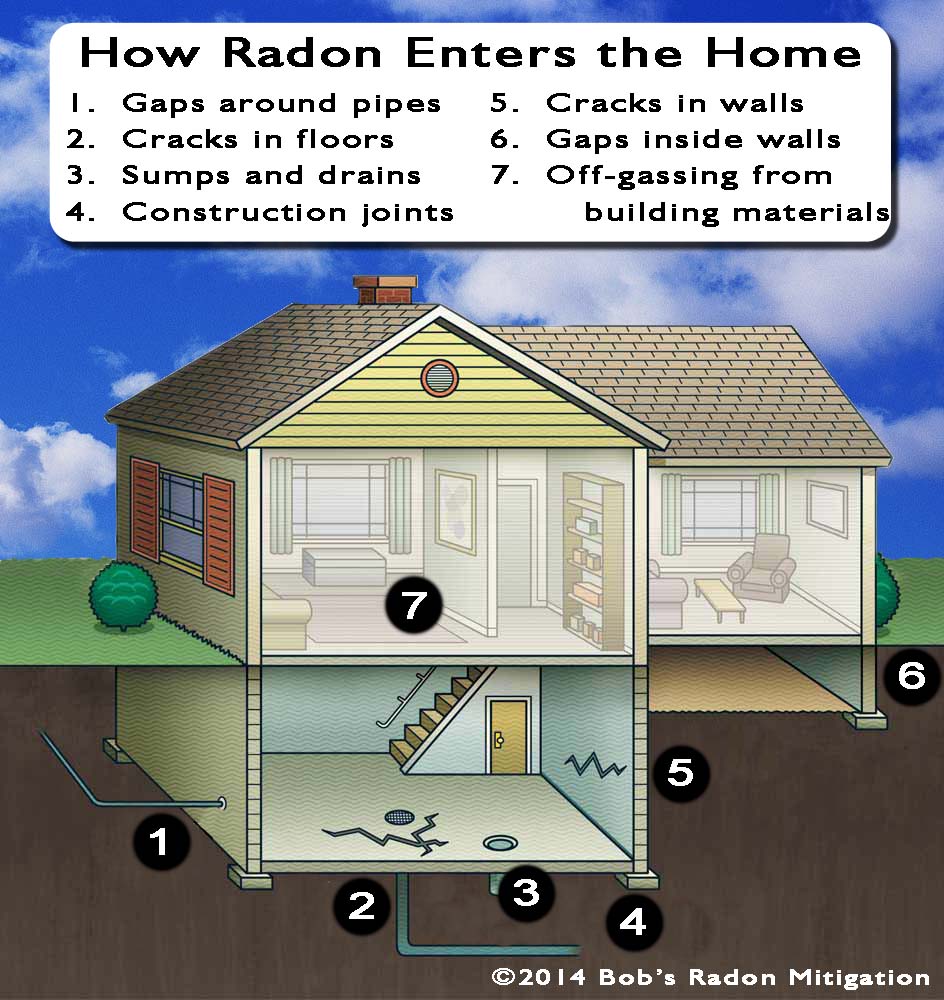What is radon gas? Is it hazardous?
Is radon really bad for you?
Breathing radon over time increases your risk of lung cancer. Radon is the second leading cause of lung cancer in the United States. Nationally, the EPA estimates that about 21,000 people die each year from radon-related lung cancer. Only smoking causes more lung cancer deaths.
Research studies carried out at the University of Iowa have aided show that radon is the 2nd leading root cause of lung cancer cells as well as the leading environmental root cause of cancer cells https://radon1.com/can-you-run-air-conditioner-during-radon-test-features/ deaths in the United States. You can not anticipate how much radon will certainly remain in your house unless you have it checked. People who survive the third flooring or higher in an apartment can be positive that their degrees are reduced, but the EPA and the Doctor General advise testing for everyone else.

Only about 20% of all institutions nationwide have actually done screening, even though the EPA advises that every school be examined. These numbers are perhaps low sufficient to make certain protection of the majority of kids from elevated radon exposures. For direct exposure requirements to be reliable, they ought to be established for those most at risk. The primary course of exposure to radon and also its progeny is inhalation.
Is radon mitigation Visit the website really necessary?

When radon gas enters the body, it exposes the lungs to small amounts of radiation. In small quantities, experts say this is harmless. However, in persistent exposures or larger quantities, radon can damage the cells of the lining of the lungs, increasing a person's chance of developing lung cancer.
This is the level of around 90 percent of residences in the USA. The EPA advises that property owners do something about it when direct exposure degrees reach over 4 picoCuries per litre, as a result of the idea that increasing radon direct exposure is associated to a considerably better danger for cancer cells. Around one in 15 homes in the USA has elevated radon degrees. The odor-free gas can enter houses with cracks in foundations, floors and walls.
- Your danger of lung cancer increases substantially with exposure to higher radon levels.
- Radon gas is a naturally-occurring by-product of the radioactive decay of Uranium in the dirt.
- Depending on your geographic place, the radon degrees of the air you breathe beyond your home may be as high as 0.75 pCi/L.
- The nationwide average of outdoors radon levels is 0.4 pCi/L and it is estimated by the National Academy of Sciences that outdoor radon levels create around 800 of the 21,000 radon generated lung cancer fatalities in the US every year.
- The US EPA has actually placed it simply, stating, "Any radon exposure has some threat of creating lung cancer.
The important things to remember is that the risk for lung cancer from radon is arbitrary and also resists data. Individuals may be subjected for a lifetime at extremely high degrees without getting lung cancer cells, while others might be subjected at moderate levels for a year or two and also agreement lung cancer. Radon is one of minority ecological dangers we have some control over. Lots of people fear that if a radon examination reveals high levels in a certain residence, that the residence is in some way polluted and decreased the value of.
Health
What are the symptoms of radon in your home?
If a person has been exposed to radon, 75 percent of the radon progeny in lungs will become "harmless" lead particles after 44 years. When an alpha particle damages a cell to make it cancerous, the onset of lung cancer takes a minimum of 5 years but most often 15 to 25 years, and even longer.
Due to the fact that you angle scent or see radon, you cant understand whether your residence has unhealthy levels of the gas unless you have the air checked. However, if examinations show that radon is placing you and your family in danger, you can take some basic actions to clarify.
How long does it take for radon to cause cancer?
Fact: You will reduce your risk of lung cancer when you reduce radon levels, even if you've lived with an elevated radon level for a long time. Keep in mind that radon levels below 4 pCi/L still pose some risk and that radon levels can be reduced to 2 pCi/L or below in most homes.